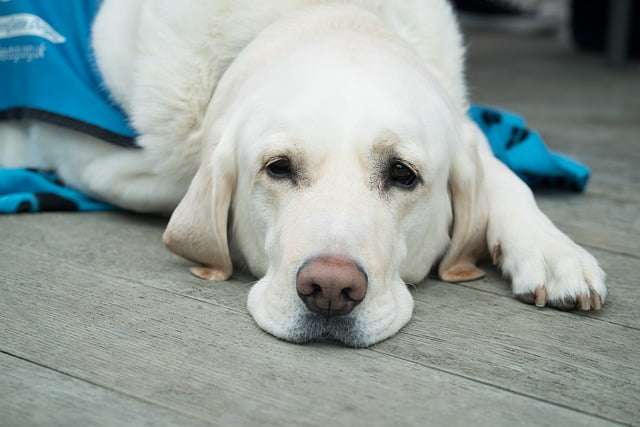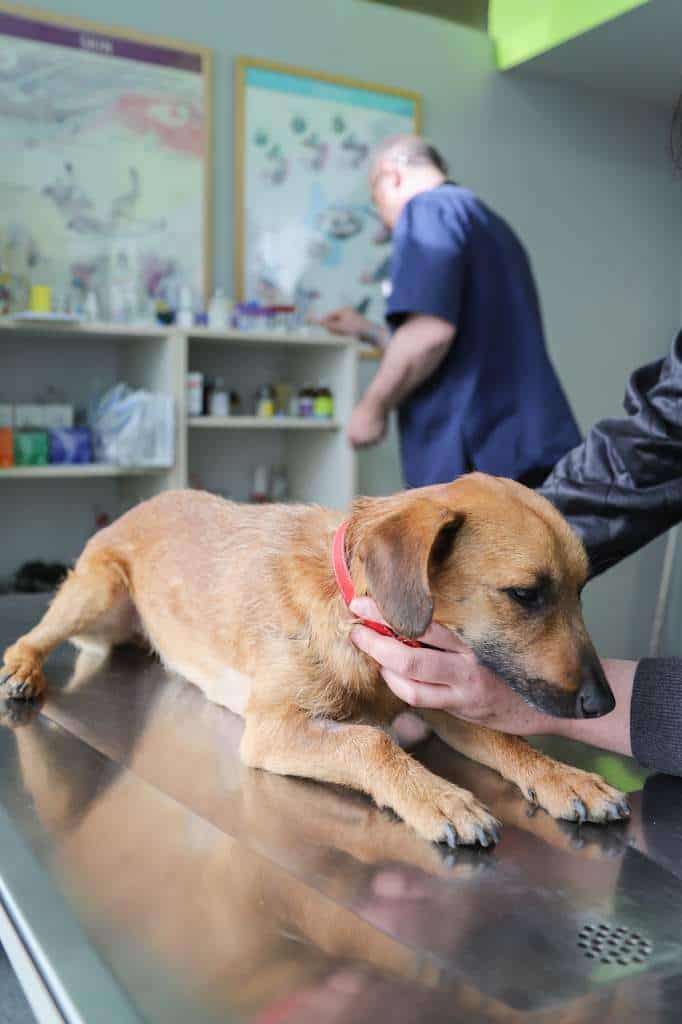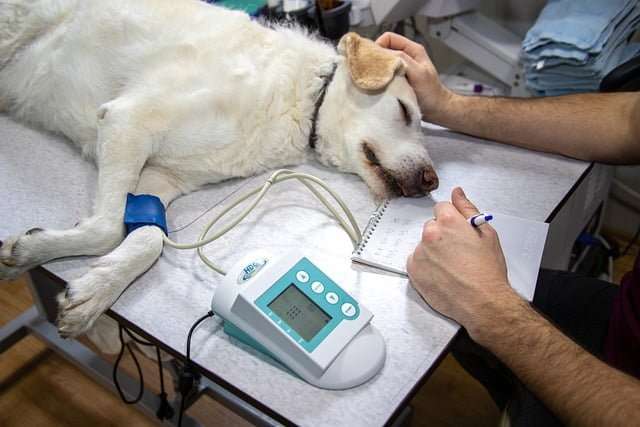Table of Contents
- What is Parvo?
- Causes of Parvo in dogs
- Stages of Parvo in dogs
- Symptoms of Parvo in dogs
- Treatment of Parvovirus Infection in dogs
- Prevention of Parvo in dogs
- Frequently Asked Questions
- What is the first sign of parvo in dogs?
- How does a dog get parvo?
- Can a dog with Parvo survive?
- Is Parvo contagious to humans?
- Can a vaccinated dog get Parvo?
- How long does it take for parvo to kill a dog?
- How can I treat my dog for parvo at home?
- How much does it cost to treat parvo?
- How do I know if my puppy will survive parvo?
What is Parvo?
Parvo in dogs is known as the Canine Parvovirus (CPV) infection. Parvo is a viral infection in dogs that is highly contagious. It is caused by the canine parvovirus. The illness affects puppies in particular that are between 6 weeks to 6 months old and many dogs who are diagnosed with this illness eventually die.

Parvo is a serial puppy killer and the parvovirus takes on two different forms:
-
Parvovirus in Intestinal form
This form is the most common. The virus attacks the cells in the dog’s intestine. When the virus attacks, it affects the body’s ability to absorb essential nutrients. This eventually results in the puppy being dehydrated and very weak due to a lack of protein and fluid absorption. This form is characterized by vomiting, weight loss, diarrhea, and lack of appetite. The virus is more deadly if the dog is concurrently infested with other intestinal parasites or worms.
-
Parvovirus in Cardiac form
This form is not very common due to the extensive vaccination of dogs nowadays. However, it is more severe as the virus usually affects puppies infected in the uterus or shortly after birth until about 8 weeks of age. The virus attacks the heart muscles and the puppy will die suddenly or after a brief period of breathing difficulty due to pulmonary edema. The puppies may or may not show the signs and symptoms of the intestinal form.

Which dog is at risk?
This disease occurs more in animal shelters, pet stores, and breeding kennels, where there are many dogs living in small confined areas. However, all breeds and ages of dogs are susceptible to parvo. Although Mutts and crossbreed are at lesser risk than purebreds.
Dogs who have not had their booster injections, unvaccinated dogs, and young puppies and are the most at risk. This is why the outbreak of parvo is very common in cities and places with a high unvaccinated dog population.
It is rare for a dog to be diagnosed with this infection if the dog mainly stays isolated from other dogs in the home or yard.
Distemper
A dog infected with Distemper may show similar symptoms to a dog with parvo. Although distemper and parvo infection have some common signs, distemper seems more severe.
Distemper is also a highly contagious viral disease that affects dogs and some other animals like raccoons, skunks, and ferrets. It is also a very common disease among dogs. The disease is caused by the Canine distemper virus (CDV) and affects the respiratory, gastrointestinal, and central nervous systems of the dog. Distemper is incurable and is often fatal too.
Causes of Parvo in dogs
The canine parvovirus is the main cause of parvo in dogs. It is highly contagious to other dogs. Dogs and puppies that are not up to date with their vaccination gets infected faster.
The virus is very resolute and can survive in environs outside the body. If protected from direct sunlight, parvovirus can survive for months and even years.
However, the viral infection can be transmitted in 2 ways, either by direct or indirect contact.
Parvovirus in dogs by Direct contact
Dogs can get infected by direct contact. The parvovirus spreads through body fluids, including dog’s vomit and poo. This is why a dog is likely to get infected just by sniffing another dog’s poo or vomit that is already infected. Some too can contact it just by licking a contaminated surface or another dog that is infected.

Parvovirus in dogs by Indirect contact
Also, dogs can get the virus through indirect contact. Since the virus can survive long on the human body, clothes, things, and the environment. When the dog comes in contact with a contaminated person, thing, or environment, they get infected. A dog is likely to catch the virus once it comes in contact with any belongings that have been touched by an infected dog.

Also, Humans, for example, may step on infected feces or soil with their shoes and bring it to the dog’s environment. There is actually evidence that the virus can live in ground soil for up to 1 year.
Stages of Parvo in dogs
The stages of the Parvovirus infection is like most other viral infection.
1. Infection
This is the stage where the dog is exposed to the virus. The viral particle can be found in the fecal material of an infected dog. The viral particles can come from other sources like the environment- either on the ground/on a surface.
The dog can contact it from the mother dog, people, or inanimate things that must have come in contact with the fecal material of an infected dog. Only a small amount of the fecal material is needed to cause an infection. The virus can enter the dog through the mouth or nose either by licking or sniffing.
2. Incubation
This is the stage the disease developed from its cause. This period takes between three and seven days. In the incubation period the dog is already infected but is not showing symptoms yet.
During this time, the virus strife for the most rapidly dividing cells in the body. It typically starts attacking the lymph nodes or tonsils of the throat. The virus targets these rapidly dividing cells to be able to multiply effectively and efficiently. Hence invading other parts of the dog’s system.
As soon as the virus has multiplied and entered the bloodstream, the virus will find other sources of rapidly diving cells. It attacks the bone marrow and the cells that line the wall of the small intestine.
In smaller puppies, the virus attacks the heart causing inflammation of the heart muscle, arrhythmias, and poor heart function.
3. Illness
The virus attacks the young immune cells, once it infects the bone marrow. This leads to a reduction of the protective white blood cells. This eventually weakens the body’s immune system making it unable to protect itself. Allowing the virus to invade the gastrointestinal (GI) tract easily. It gets worst as the virus attacks the lining of the small intestine, preventing the dog’s gastrointestinal tract from carrying out some basic functions. The GI tract becomes unable to: absorb nutrients, prevent bacteria from moving into the gut and, prevent fluid loss into the stool.
This however leads to some health issues which are some of the symptoms you start seeing like diarrhea, vomiting, lethargy, dehydration, fever, and possibly sepsis.
Most of the dogs that eventually die when infected die as a result of dehydration or shock. Also many die too from the damage caused by the septic toxins as the intestinal bacteria escape into the bloodstream.
4. Recovery
Recovering from parvo in dogs varies. It depends on the severity of the disease and the amount of damage done. Unfortunately, some don’t recover and die while some do recover after treatment.
Dogs recovering should be fed a bland, easily digestible diet. It’s important that dogs with the infection receive adequate nutrition so that their intestine can heal. They should be placed on prescripted veterinary diets that are carefully formulated to be gentle on the GI tract and nutritionally balanced.
Symptoms of Parvo in dogs
As a dog owner or breeder, you have to be very observant to notice any slight change in your dog’s health or behavior. Sometimes, you may notice the dog may seem moody, weak, or uncomfortable. For instance, when you have a very agile and playful dog and you notice it keeping to itself and acting under the weather, you should know something is definitely wrong.
It takes up to 3-7 days for a dog to show signs and symptoms of having parvo after they have caught it. Listed below are major signs of parvo in dogs:
- Lethargy: This is actually the first sign you will notice when a dog gets infected. It is a state of weariness, tiredness, lack of energy, or fatigue. Most times it can be accompanied by depression.
- Anorexia: This is a loss of appetite. It is likely the secondary sign. The dog hardly eats as before and refuses food.
- Weight loss: The dog may begin to rapidly lose weight.
- Vomiting: The dog’s puke may be clear or brown or yellow in color. The vomiting will be frequent and at times you may notice the dog drooling or foaming at the mouth.
- Bloody Diarrhea: The dog will be stooling frequently. The stool will be watery and will often contain blood with a foul smell.
- Fever: As the infection progresses, the dog will develop a severe fever.
- Pain or discomfort
- Dehydration: This eventually happens as a result of diarrhea and vomiting. The dog tends to lose more fluids than they take in. Hence there is no enough water or fluid in their body to carry out their normal functions which makes them dehydrated.
- Low body temperature
- Red inflamed tissue around the eyes and mouth
- Rapid heartbeat
Treatment of Parvovirus Infection in dogs
There are no drugs in existence that can kill the virus, rather the treatment usually administered to the dog is just to support the dog’s immune system and help their body strong enough to fight off the disease.
Once the Parvovirus infection is left untreated, the mortality rate as a result of parvo in dogs is 91%. Hence if you notice any of the symptoms mentioned earlier on, it’s advisable to take your dog to the vet. The virus is deadly and the puppy will require intensive care. The sooner the dog is diagnosed the better.
Hence if you notice any of the symptoms mentioned earlier on, it’s advisable to take your dog to the vet. The virus is deadly and the puppy will require intensive care. The sooner the dog is diagnosed the better.
Hospitalization
The Vet will recommend the dog is hospitalized in an isolated ward. Treating parvo in dogs can be very expensive because the dog will need to stay for several days in intensive care.
The average time a dog recovering from parvo stays in the hospital is 5-7 days. Unfortunately, some puppies will die as they are not strong enough to survive the toll the disease takes on them. It’s better to seek help from your vet early because most deaths from parvo happen within 48-72 hours after the symptoms start to manifest.

Drugs and Intravenous fluids
Some drugs will be administered to control vomiting and pain. Also, they are given intravenous fluids to help them from becoming dehydrated. The dog may be given antibiotics if the dog develops a secondary infection due to a weakened immune system.
Antibiotics for parvo
Broad-spectrum antibiotics are used for the treatment of parvo to hinder a secondary septic infection. Ampicillin, cephalexin, and fluoroquinolones are the most common antibiotics used.
Cautious measures
When treating a parvo-infected dog, the vets have to wear special clothes that will be removed and sanitized. This is a compulsory preventive measure that must be taken to ensure the disease doesn’t spread to other dogs at the veterinary hospital.
Diet
Recovering dogs should be fed a bland, easily digestible diet. It’s important for them to receive adequate nutrition so that their intestine can heal. They should be placed on prescripted veterinary diets that are carefully formulated to be gentle on the gastrointestinal tract and nutritionally balanced.
Prevention of Parvo in dogs
Parvo is preventable. The best way to prevent parvovirus is by vaccinating the dogs and practicing good hygiene. Thorough and proper cleanup of the dog’s environment is very important because the virus is resistant to many commonly used cleaning agents and disinfectants. However, household bleach is one of the few disinfectants that kill the virus. You can use it regularly when cleaning your dog’s environment or kennel.
Until a puppy has received its complete series of vaccination, it should not be exposed to unvaccinated dogs. Vaccines for the parvovirus are recommended for all puppies even though vaccinated dogs are not 100% protected from the virus. It is still better and safe to vaccinate them. The puppy should be given three shots of the vaccine. One of the shots, when it is between 6-8 weeks old, another at 10-12 weeks, and at 14-16 weeks. Then it should be administered a booster shot one year later and every 3 years after that.
A Guideline of Recommended Dog Vaccination Schedule
6-8 WEEKS OLD DOG |
10-12 WEEKS OLD DOG |
16-18 WEEKS OLD DOG |
12-16 MONTHS OLD DOG |
EVERY 1-2 YEARS |
EVERY 1-3 YEARS |
|
RECOMMENDED VACCINATION |
Distemper
Parvovirus |
DHPP (vaccines for Distemper, Hepatitis, Parainfluenza, Parvovirus) |
DHPP
Rabies |
DHPP
Rabies |
DHPP |
Rabies |
OPTIONAL VACCINATION |
Bordetella |
Influenza
Leptospirosis Bordetella Lyme disease per lifestyle |
Lyme disease
Influenza Leptospirosis Bordetella per lifestyle |
Coronavirus
Bordetella Lyme disease Leptospirosis |
Coronavirus
Bordetella Influenza Leptospirosis Lyme disease per lifestyle
|
___ |
Most importantly, always inform your vet of any slight symptoms you notice in your dog. If any of your dogs get infected, take the others away from that vicinity and get them checked and treated if need be.
Do not expose your puppy to environments where unvaccinated dogs go like some dog parks. In fact, if possible isolate your dog from other dogs, let them stay in the home or yard. The good thing is vaccination can prevent parvovirus infection to an extent.
Frequently Asked Questions

What is the first sign of parvo in dogs?
The first sign of parvo in dogs is likely to be lethargy. This is when the dog starts showing some sort of tiredness, fatigue, or lack of energy. Some of the other signs include vomiting, bloody diarrhea, depression, fever, loss of appetite, weight loss, dehydration, pain or discomfort, and low body temperature.
How does a dog get parvo?
A dog can get parvo by direct or indirect contact with contaminated feces, things, environment, people, or an infected dog. The parvovirus spreads through body fluids, including dog’s vomit and poo. So a dog is likely to catch the virus just by sniffing another dog’s poo or vomit that is already infected. Also, a dog will contact it just by licking a contaminated surface or another dog that is infected.
Dogs can get the virus through indirect contact. Since the virus can survive on the human body, clothes, things, and the environment. The dog comes in contact with a contaminated person, thing, or environment, and gets infected. A dog is likely to catch the virus once it comes in contact with any belongings that have been touched by an infected dog. Also, Humans, for example, may step on infected feces with their shoes and bring it to the dog’s environment.
Can a dog with Parvo survive?
Although Parvo is a deadly disease, a dog with parvo can still survive. Early diagnosis and treatments increase the chances of your dog surviving the infection. There is a 90% chance that your dog will survive the infection when a trained vet attends to your dog. Most puppies that survive the first 3-4 days recover completely.
Is Parvo contagious to humans?
Parvo is not contagious to humans. It’s only contagious between dogs, although humans can pass parvo from one dog to another on their hands, clothes, or shoes.
There is actually a human version of parvovirus but it is a different strain from the ones that affect dogs. Though humans cannot pass this type to dogs.
Can a vaccinated dog get Parvo?
Unfortunately, vaccinated dogs can still catch the parvovirus. Vaccinating your dog does not give the dog 100% protection from the virus.
How long does it take for parvo to kill a dog?
It’s better to seek help from your vet early because most deaths from parvovirus infection happen within 48-72 hours after the symptoms start to manifest. Early diagnosis and treatments increase the chances of your dog surviving the infection.
How can I treat my dog for parvo at home?
It’s advisable to take your dog to the veterinary clinic but if you must treat it at home, it’s advisable to consult a vet for the proper medication and instructions. Treating a dog with parvo at home is a step-by-step process and can take up to 7 days to cure.
All you need to do is to rehydrate the dog, kill the bacterial and viral infection in the dog and also replenish the nutrients and electrolytes lost. Here is a list of what you may need to fight the virus:
- Saline solution or Distilled water
- Minimum 6 cc syringe
- Amoxicillin for dogs
- 22 gauge needle
- Pepto
- Tamiflu
- Thermometer
- Bullyade (Flavoured vitamins and mineral for dogs)
- Gerber Chicken flavored or Beef flavored baby food
However, the intensity of the treatment depends on the degree of illness of the dog. A dog with very mild diarrhea can do perfectly well treated at home with just oral antibiotics. Whereas, in order to save a dog with profuse vomiting and diarrhea resulting in severe dehydration, there will be a need for intensive care and therapy which will include hospitalization, intravenous fluids, injectable antibiotics, and many others.
How much does it cost to treat parvo?
Treating parvo can be expensive. The average cost of diagnosis and treatments can vary between $500 – $2000. It’s more expensive if the dog has to stay for several days in intensive care.
How do I know if my puppy will survive parvo?
There are positive signs that will let you know your puppy will survive from parvo. Look out if your puppy stops vomiting and gains back its appetite. Also when there’s less to no blood in their stool that’s a big sign of survival. Once your puppy is recovering their activity levels get back to normal.